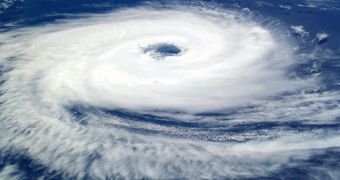Tropical cyclones typically weaken once they hit land, which is why it rarely happens that they cause tremendous damage to human communities.
However, tropical cyclones can sometimes grow even more aggressive after making landfall. NASA scientists say that this is because they are fueled by a so-called brown ocean.
Writing in a recent issue of the International Journal of Climatology, the researchers explain that this “brown ocean” is made up of the water vapors released by very moist soils.
They say that, while still hovering over marine environments, tropical cyclones accumulate strength from oceanic waters.
Once they are cut off from this power-source, they weaken and no longer constitute a threat.
The problem is that, every once in a while, such storms switch to deriving energy from the evaporation of soil moisture. When this happens, they intensify.
“The land essentially mimics the moisture-rich environment of the ocean, where the storm originated,” researcher Theresa Andersen explains, as cited on the official website for NASA.
Otherwise put, the storm does not lose its tropical warm-core characteristics, and brings heavy rainfall and strong winds to the patches of land it journeys across.
Scientists say that this phenomenon is what must be held accountable for the aggressive nature of 2007's Tropical Storm Erin.
At the time this tropical cyclone hit the United States, meteorologists were taken aback by its evolution.
Instead of losing strength after making landfall, this storm grew even more aggressive as it passed through Texas, and eventually formed an eye over Oklahoma.
By the looks of it, both Tropical Storm Erin and others of its kind should be placed in a new category of storms, which the researchers call maintenance and intensification events.
Now that climate change and global warming are making dry areas get even drier, and wet areas get even wetter, some worry that weather phenomena like Tropical Storm Erin could become a fairly common sight.

 14 DAY TRIAL //
14 DAY TRIAL //